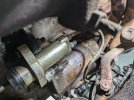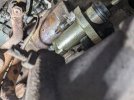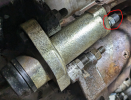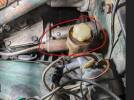Rodney Shelast
Donation Time
I am looking to bleed slave cylinder, as first step, for SV Alpine ('66) as clutch not functioning. It also se like the OD won't disengage as 3rd & reverse won't click into gear..I've read threads regarding slave & many reference slave cylinder located at transmission housing, however, isn't that in reference to OD solenoid ? Slave in my car is located on LHS of firewall. How do I go about getting into slave to bleed screw ! Thanks all...







